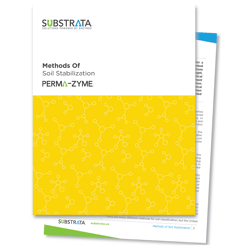
Ideas and methods of soil stabilization have been around for centuries. The concept of soil stabilization is that the soil is being altered in some form, whether it is mechanically or chemically to lock the soil in place and prevent it from moving. For example, picture you are looking to build a beautiful, large home in a swampy area. The swampy area is continuously wet and sometimes dries. When the area is wet, you cannot walk on the soil without sinking into it. In this instance, if you were to build your beautiful home on that soil, the minute it got wet the house would nearly collapse. To reduce the risk of your beautiful home collapsing, you would need to do something to keep the soil moving. You can do this by mixing in some chemicals or compacting the soil so much that it is more stable. Each of these options are methods of soil stabilization.
When people think of soil stabilization, they often think of construction or erosion control. Whether it be road or foundation, it is important to remember that there are several different instances in which soil stabilization can be beneficial. When using soil stabilization for construction you are typically trying to strengthen the soil or keep it from shifting so the structure above will remain intact for as long as possible. When using soil stabilization for erosion control you are trying to keep the top layer of the soil in place when water or wind disturbs the surface. Without this proper treatment, this will usually result in mudslides or hill sides that are extremely unstable.
There are dozens of soil stabilization methods. These methods include adding cement to the soil, adding chemicals to change the chemical or physical makeup of the soil, and mechanical methods such as compaction. This page will address the most popular methods of soil stabilization, as well as their strengths and weaknesses. It is good to know about the various forms of soil stabilization since you are not always able solve your soil stabilization troubles with the same method.
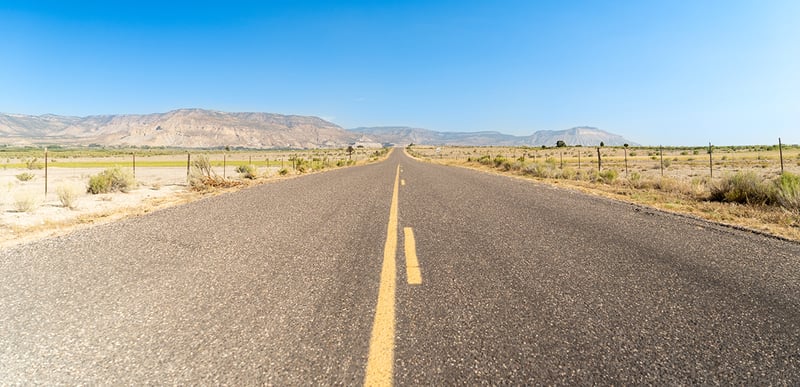
The first part of deciding what method of soil stabilization will be best for your application is understanding what type of soil you are dealing with. There are four main types of soil: Sand, Silt, Clay and Loam. Each soil has different characteristics and needs when being stabilized.
One of the largest factors to consider when working on soil stabilization is the soil’s organic content. The organic content is often measured by the soil’s Plasticity Index, which is a result given by an Atterberg Test. It is essential to have an idea of the organic content because this will help you figure out how the soil’s shape will change. Soil that has less organic content often will not change shape when wet, while soil that is highly organic will change shape dramatically when wet.
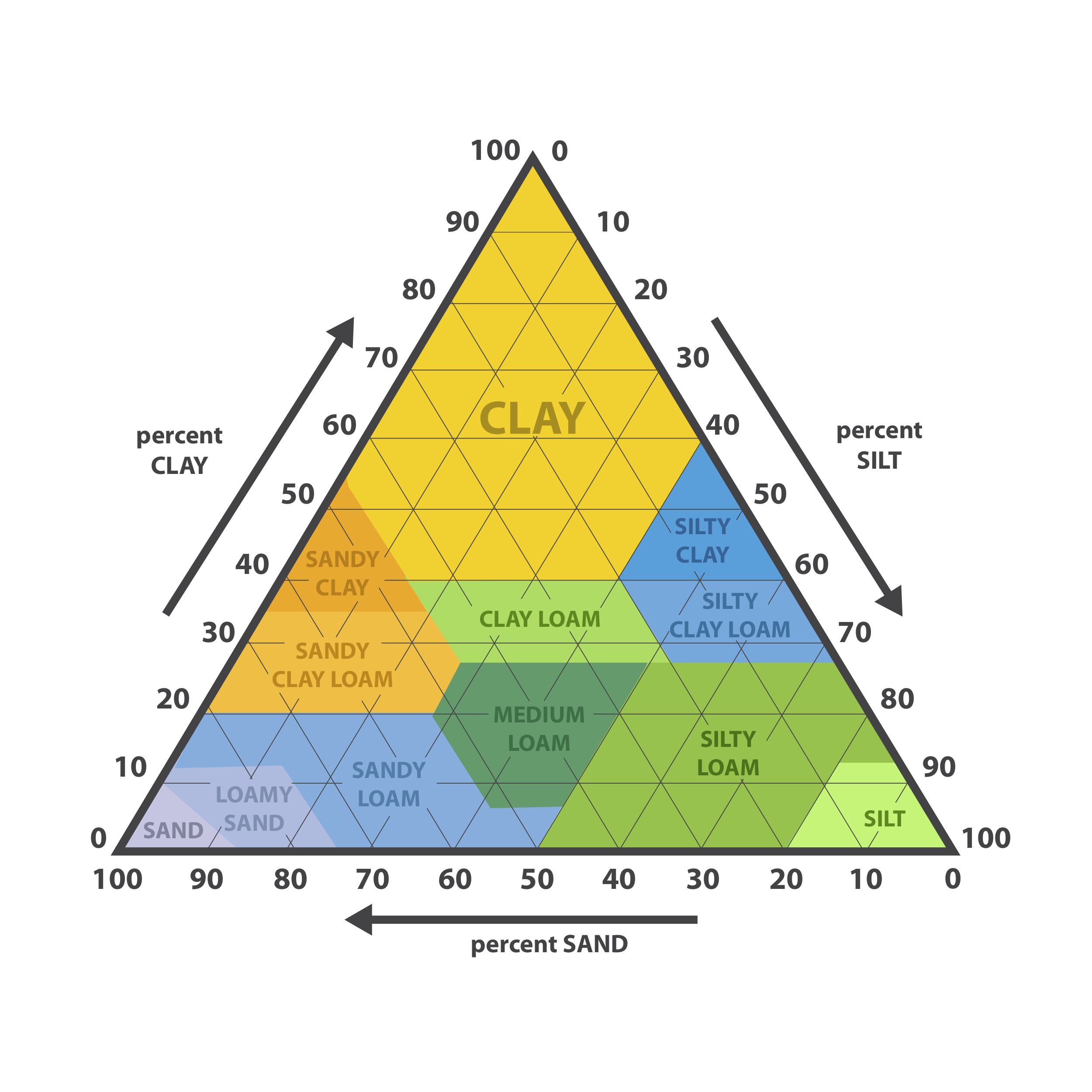
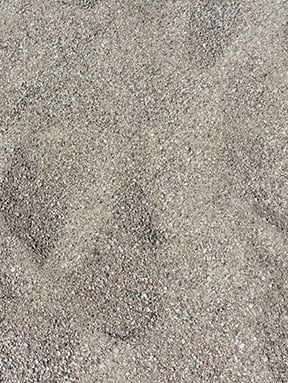
Sand is one of the most popular, or well-known soils. The best example of a sandy soil is beach sand. The particles in sand are the largest of any soil. It is essentially made up of very small rock, both in size and organic content. Traditionally, sand is formed by the breakdown of rock. Sandy soils usually contain very little organic content and generally no plasticity, which explains why you do not see much growth on the beach. The soil contains zero nutrients for plants to grow. While the cons have been pointed out, there are some benefits to sand. In regard to stabilization, the sand particles are large and will not change shape when wet. Since the sand particles can be compacted together; it is able to create a very rigid surface.
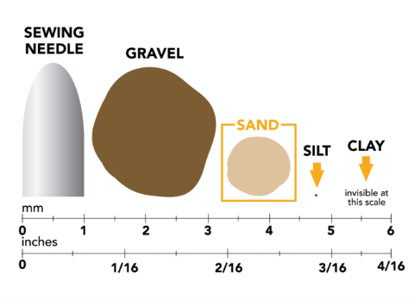
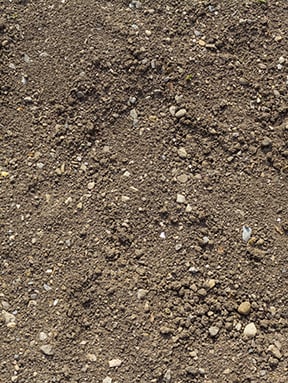
Silt is the next largest soil type after sand. Often getting confused as clay, silt is actually very different from clay. Silt is created from eroded rock, such as when the rock has been worn away by water or wind. Because silt is formed from rock deterioration and erosion, it does contain some quartz content but has little organic matter. Exhibiting that silty soils are traditionally non-plastic. Since silty soils originate from rocks, the silt is often dense; causing the silt to settle at the bottom of standing water. When growing crops, silty soils are optimal because they often contain a lot of nutrients required by the crops. More importantly, the silt promotes water retention and air circulation since the soil is dense but does not bond together. While silt is great for agricultural settings, it can be a challenging soil for construction due to the size of the silt particles and their density. Resulting in the fact that silt is often hard to compact and will move when wet.
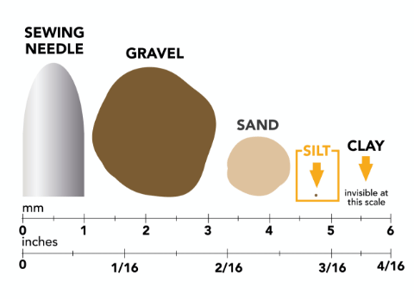
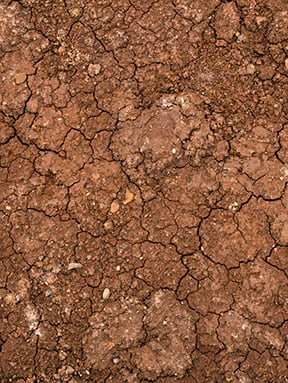
Of all of the soils, clay soils are the smallest. Unlike all other types of soils, there are many different species of clay soils that range in color and characteristics. While everyone is familiar with the red-colored clay soils, this particular soil can also present itself in an almost all white to a very dark black color. The largest difference between clay soils and the other types of soil, other than the particle size, is that it develops plasticity when wet. A soil that becomes plastic while wet results in the soil's shape undergoing permanent deformation. This means that the soil will expand or contract when wet, which means whatever is on top of the soil has the possibility of going through a shape deformation as well. Because of the clay soil’s plasticity, the soil’s expansion and contraction will cause large challenges when performing construction on the soil. Usually, clay-based soils are removed from the construction site or treated with a chemical or additive to harden the soil permanently.
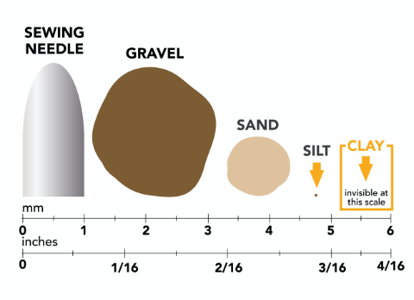
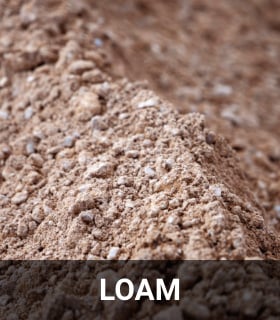
Loamy soil is a mixture of sand, silt, and/or clay. Often times a loamy soil is classified as a type of soil followed by loam. For example, “Clay Loam” or “Sandy Loam”. When a loamy soil is prefaced with a specific soil type (such as sand, silt, or clay) that means the majority of the soil is that soil. For example, when you see “Sandy Loam,” that means that majority of the soil is sand with a mixture of clay and silt. Each classification and variety of loamy soil varies due to the characteristics of the majority of the soil. It is very common for soils to be classified as some form of loam. To determine the different types of soil, conduct a loam test such as a sieve analysis to determine the particle size, and an Atterberg test to determine the soil’s plasticity and organic content.

Chlorides are some of the most popular forms of soil stabilization for unpaved roads. Magnesium Chloride and Calcium Chloride are often the most popular. The decision between which is usually based on the availability of your geographic location. Both, Magnesium and Calcium chloride, come in a liquid or solid form. For application, you will need to use a water truck that is heavily diluted with water.
Chlorides can be applied in one of two ways. The most effective is to apply the chlorides to the top 3-6 inches of the soil, mix it in, and then follow up with compaction. Another method of application is to simply spray the top of the soil with the chloride. This method is quicker but does not produce the same results as when the chloride is mixed into the soil. Either application to the soil will result in a very hard surface, emitting little to no dust into the atmosphere.
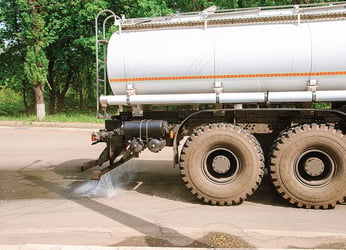
Essentially, chlorides are salts. Chloride soil stabilization works by trapping in the moisture from the environment and locking it into the soil. Just as when a ball of salt is formed, becoming extremely hard and strong; the same principle applies with Chloride stabilization. While the soil is very hard and strong when dry, the soil immediately loosens up as soon as the water is applied to the soil. Meaning that after rain or snowmelt, the surface will have to be treated again.
Chloride soil stabilization has been around for decades and is often the most popular method. Chloride stabilization is well known, tried and true, and often cost-effective. Some of the downfalls for Chloride stabilization include that it requires reapplication after the surface becomes wet but, more importantly, are the environmental concerns. The amount of chloride introduced into the environment and ecosystem is higher than normal, which can have detrimental effects on plants and wildlife.

Polymer soil stabilization is the method of adding polymers to the soil in order to improve the overall physical property. Polymers are a chemical compound with molecules that bond together to create a repeating chain. In other words, the polymer is bonding the soil particles together, very similar to the function of glue. Polymers are traditionally sold in liquid form and are less diluted than other methods of soil stabilization, meaning that more product is required than other means of soil stabilization. You’ll find that polymers are typically used for unpaved surfaces such as dirt roads, paths, or temporary pond lining.
There are various types of polymers, but the main types are synthetic and biopolymers. Synthetic polymers are mineral-based and have many of the same binding properties as Portland cement. While not all synthetic polymers are known as environmentally friendly or toxic, it is known that synthetic polymers do tend to have more environmental concerns. Biopolymers are polymers that are a result of a biological process. Biopolymers tend to have less strength than Synthetic polymers, but have more environmentally friendly qualities.
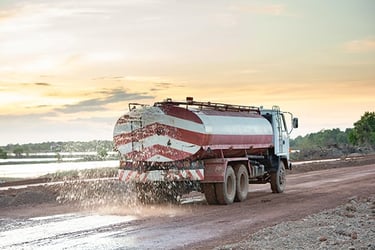
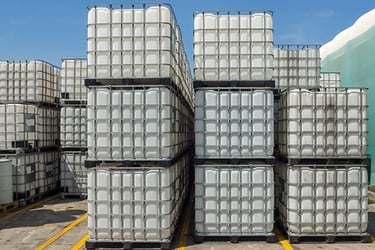
Polymers work based on a long repeating molecule; meaning that the soil particles are bonding to the molecule. This makes polymers compatible with all types of soil, ranging from sandy soils to clay soils. The size of a polymer’s molecule will affect the it's performance on any given soil, seeing that the soil particle will need to fit into the molecule. The polymer's molecule size is particularly important since a molecule that is too big may not allow a small clay particle to fit properly, or vice versa with a small molecule and large sand particle. While polymers are a versatile soil stabilizer, not all of them work well with fine soil types.
The lifespan and characteristics of polymers can vary depending on the polymer. However, traditional applications last 1 to 3 years with little maintenance. Most polymer applications create an impermeable surface for the life of the application. Although, just as the lifespan varies, the performance of water can vary as well.
| ADVANTAGES | DISADVANTAGES |
|
|

Lime or cement soil stabilization are one of the most popular means of soil stabilization in the United States. This soil stabilization method is done by mixing lime or cement into the soil in order to increase its strength and resiliency. The percentage of lime or cement that gets mixed into the soil varies depending on the native soil’s characteristics. Often, the higher the plasticity, the more lime or cement will be mixed in. Commonly, lime and cement are grouped together since they are very similar, both being used as a binder.
Lime occurs naturally, while cement (also known as Portland cement) is synthetic, or manmade. Although, treating the soil with cement or lime is one of the most popular means of soil stabilization, it is most prevalent in paved roads. Typically, it is cost prohibitive to treat unpaved roads with cement. Geographical regions often dictate whether you use lime or cement to stabilize soil. Some regions have lime readily accessible, while others do not, making cement more cost-effective.
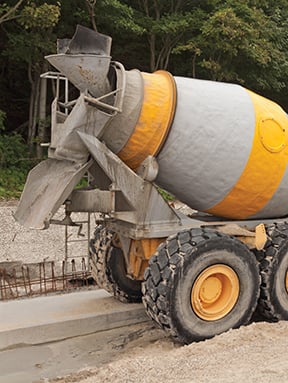
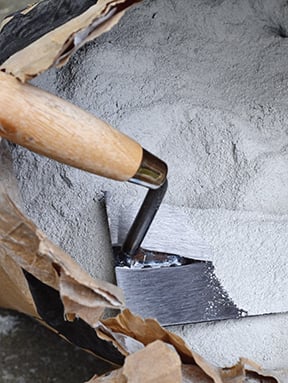
Lime or cement soil stabilization works by binding all of the soil’s particles together, which results in an increase of the soil’s strength. Since this process calls for adding cement or lime to the soil, practically all soil types are compatible with this type of soil stabilization. While most soil types are compatible with lime and cement soil stabilization, the soil must be analyzed to ensure that the proper additive amount is being used. If a low amount of additive is used, then the soil will not reach the desired strength. If a higher amount is used, then the soil could shrink or begin to crack.
One of the major benefits of lime or cement is the ability to use it on soil that is above optimum moisture. When using a powder form of lime or cement in conjunction with a moist soil above optimum moisture, the soil will be dried quickly, allowing you to compact the soil properly. While the powder method is desirable for applications with very wet soil, it does unfortunately have plenty of health concerns due to the powder being so fine. This poses a safety risk to the workers.
During the application of lime or cement to the soil, you will need to mix it thoroughly. It is important to keep the soil’s moisture content as close to optimum moisture as possible. Upon mixing the soil and lime or cement, the next step is to compact the soil as tightly as possible. Once the soil has been compacted, the soil will begin to cure and will continue for approximately 28 days.
| ADVANTAGES | DISADVANTAGES |
|
|

Fly ash soil stabilization is similar to lime or cement stabilization in principle but differs based on the product being used. Fly ash is a byproduct of coal from coal-fired power plants. Traditionally, the byproduct is stored in landfills or ponds, but fly ash can also be used as a bonding agent to increase the soil’s strength. Just as cement and lime stabilization are primarily used for soil stabilization as the subbase to paved roads, fly ash’s primary use is to treat the subbase of paved roads. Because fly ash is a dry additive, one large benefit is using fly ash in soil regularly above optimum moisture. The powder will absorb the moisture and lower the soil’s moisture content.
There are two main types of fly ash, Class F and Class C. Class C fly ash is cementitious and pozzolanic by nature. Once the fly ash is wet, it will harden because of the cementitious nature, while the pozzolanic supplies a silica aspect. Class F Fly ash is only pozzolanic in nature, which means that it will not harden on its own; it will need an activator such as gypsum or calcium hydroxide. The types of fly ash are dependent on which coals the fly ash is derived from, this will vary by location and region.
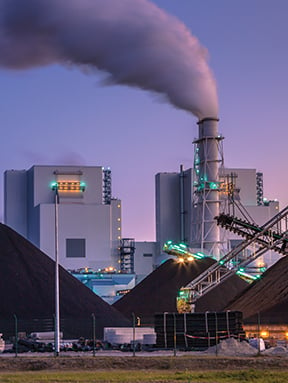
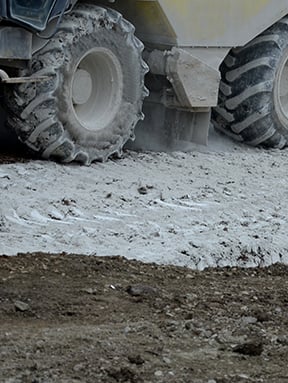
Typically, fly ash reduces soil stabilization costs compared to lime or cement soil stabilization. Fly ash is essentially a waste product from a different manufacturing process. A large advantage to fly ash is the fact that it is a dry additive, which is extremely helpful and beneficial for high moisture soils. Being a dry additive is also a disadvantage in the fact that the additive can be labor intensive to apply as well as a health concern to workers since the powder possesses an inhalation risk. The cure time is another factor to weigh in when using fly ash. While this can vary depending on the fly ash and soil, the cure time is usually slower than a cement or lime treated soil would be.
Using fly ash as a means of soil stabilization varies in popularity around the world, depending on the location. As the coal-fired power plants decrease in popularity and production, the amount of fly ash that is produced will decrease substantially. This means that in the future, fly ash will be hard to obtain.
| ADVANTAGES | DISADVANTAGES |
|
|

An enzyme is a living organism that acts as a catalyst to activate a specific biochemical reaction. The use of enzymes as a soil stabilizer is a relatively new method of soil stabilization. When using enzymes for soil stabilization, the enzymes work by permanently bonding the soil particles together to form a concrete like surface. Its uses can vary from unpaved roads, paved road subbase, erosion control, dust control, and many more. The most prominent use of enzyme-based soil stabilizers are unpaved roads. When treating the soil with an enzymatic formula, the unpaved road will traditionally last over ten years with little maintenance in all climates. While enzymatic soil stabilizers have many uses and advantages, the largest requirement is the soil type. Traditionally enzymatic soil stabilization requires a minimum amount of clay-based soils to be effective. Depending on the manufacturer, enzymatic soil stabilizers are usually humanmade and environmentally friendly.
As an example of how enzyme soil stabilizers work, think about a ball of clay soil. When a ball of clay soil has dried, it becomes very hard. Typically, over time it will break down, but easily once the soil becomes wet again. This is because the water that was introduced to the soil has created a chemical bond, and as the hydrogen dissipates, the bond weakens. By introducing an enzymatic soil stabilizer with the proper chemical charge, the bond between the soil particles will become permanent. In this instance, the enzyme is fueled by bonding the soil particles together. It will continue to bond them for weeks, months, and even years, causing the soil to continually to harden. Because of how the enzyme works, it is important to have chemically organic content in the soil (often referred to as clay). If there is no organic content in the soil, then the enzyme will have nothing to interact with and quickly die off.
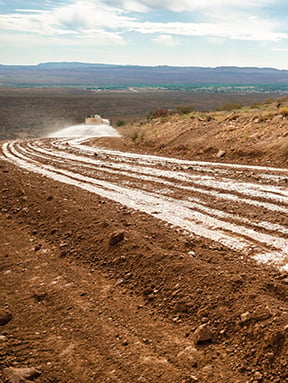
The process of applying an enzymatic soil stabilizer is very similar to that of cement, lime, chlorides, and fly ash. Start by ripping the existing soil in order to bring up fresh soil, apply the enzyme-based soil stabilizer, and then compact the soil. The compaction process is the most important part of the process. In order to get the soil to bond to itself, the soil particles must be close together. Without thorough compaction, the soil will not reach optimum strength.
The biggest advantage to using an enzyme-based soil stabilizer is the lower construction and maintenance costs. When this method is used for unpaved roads, the unpaved road can last 10-15 years with little to no maintenance. It is resilient enough to withstand all climates, including rain and snow. When an enzyme-based soil stabilizer is used to treat the subbase of a paved road, the upfront construction costs can be dramatically decreased. This is because the subbase is able to be decreased or eliminated. It is common for paved roads to last substantially longer than traditional roads since the subbase is more resilient and robust. It is also a general rule that all enzymatic soil stabilizers are non-toxic, non-hazardous, and environmentally friendly. This is an important feature due to the fact that the enzyme-based soil stabilizers can be used in various areas; such as close to water sources, like lakes and ponds, without the concern of any pollutants.
| ADVANTAGES | DISADVANTAGES |
|
|

Mechanical soil stabilization is the method of altering the soil's physical properties to a state in which the soil particles are interlocked. This method is usually performed by applying a large compaction force to the soil repeatedly until its particle sizes have reached the desired size and shape. To execute this process, you will need heavy equipment that can apply a large compressive force. This usually includes a large compactor, or rarely a crane that applies a dropping weight. The soils that are being stabilized when performing mechanical soil stabilization are often rocky and sandy soils. Due to our advancements in other types of soil stabilization, mechanical stabilization is seldom the sole stabilization solution.
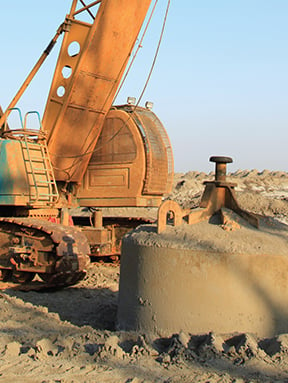
While mechanical soil stabilization is not a common method, it does have its advantages. One advantage includes that the soil’s particles are being physically altered; meaning that no chemical alteration is happening that can eventually wear away. Because of the physical alteration, the process is known to be time-consuming, tedious, and expensive.
Note: Mechanical soil stabilization is not the sole method of soil stabilization; it is an integral part of many other methods.
| ADVANTAGES | DISADVANTAGES |
|
|

Geotextiles are a type of material that is applied to the soil to increase the soil’s stability, provide erosion control, and aid in drainage. Geotextiles range from all sizes and thickness; some are woven materials, while others are thick plastic extrusions that can be up to four inches thick. Geotextiles are mostly used for erosion control. In this case, they mitigate the top layer of soil from being displaced by rain or water. In some areas and applications, geotextiles have the ability to be used for road construction. For road construction, the thicker extrusion type of geotextiles are often required in order to provide the appropriate strength.
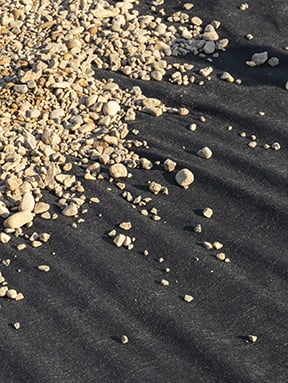
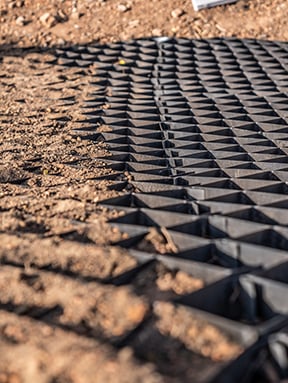
Geotextiles range from all shapes and sizes and can be used for just about any soil type. While they are very prevalent for erosion control, geotextiles are not commonly used for road construction or large, heavy load applications due to the geotextiles' high cost. Due to their mechanical nature, geotextiles are usually labor intensive since workers have to lay them out manually.
| ADVANTAGES | DISADVANTAGES |
|
|
With so many stabilization categories and subcategories, choosing the right methods of soil stabilization can be challenging. It is important to remember that there is not a gold standard regarding soil stabilization, meaning that every project and soil type will have different requirements and needs for soil stabilization. It is beneficial to know about the different methods and products that are available. To choose the best method of soil stabilization for your project, consider the following:
Learn about the different types of soil stabilization, how they work, and how they can be beneficial to your needs.
